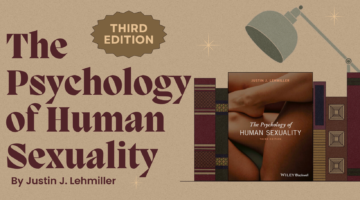“Excuse Me, My Face Is Up Here”: A Study Of Eye Movements And Sexual Intentions
September 4, 2014 by Justin Lehmiller
How do you know whether your date is looking for a one-night stand or a long-term love? A new study just published in the journal Psychological Science suggests that the answer may be in their eyes. I know this will not be surprising to some of you, but the amount of time a person spends looking at your face versus your body appears to be indicative of whether their intentions are romantic or purely sexual in nature.
In this study, twenty heterosexual college students sat at a computer and viewed a series of black and white photos. In the first portion of the study, they viewed photos of young heterosexual couples; in the second portion, they viewed photos of single individuals of the other sex who were gazing into the camera. For each photo, participants were asked to decide whether it elicited one of two emotions: romantic love or sexual desire. To be clear, participants were only asked about one of the emotions (love or desire) per photo and had to decide whether they felt it by pressing a key for yes or a different key for no. While completing this task, participants were hooked up to an eye-tracking device that recorded exactly what parts of each picture they were looking at.
There was no difference in how long it took participants to decide whether a photo elicited feelings of love or feelings of sexual desire, which suggests that both emotions are processed very fast by the brain. However, the eyes focused on very different things depending upon the emotion reported. In both portions of the study, participants who said that a photo elicited feelings of love tended to fixate on people’s faces. In contrast, when a photo elicited feelings of sexual desire, participants fixated on people’s bodies.
Importantly, these effects held for both male and female participants. So, contrary to popular belief, it’s not just men who look at the bodies of people they sexually desire.
Of course, there are some important limitations of this research, not the least of which is that the sample was small and only consisted of young heterosexuals. We also don’t know whether and how eye gaze patterns might differ in the context of a real live interaction, as opposed to viewing a photo. Nonetheless, these results do suggest that the eyes have the potential to reveal important information about both our romantic and sexual intentions.
Want to learn more about Sex and Psychology ? Click here for previous articles or follow the blog on Facebook (facebook.com/psychologyofsex), Twitter (@JustinLehmiller), or Reddit (reddit.com/r/psychologyofsex) to receive updates.
To learn more about this research, see: Bolmont, M., Cacioppo, J.T., & Cacioppo, S. (in press). Love is in the gaze: An eye-tracking study of love and sexual desire. Psychological Science.
Image Source: iStockphoto

Dr. Justin Lehmiller
Founder & Owner of Sex and PsychologyDr. Justin Lehmiller is a social psychologist and Research Fellow at The Kinsey Institute. He runs the Sex and Psychology blog and podcast and is author of the popular book Tell Me What You Want. Dr. Lehmiller is an award-winning educator, and a prolific researcher who has published more than 50 academic works.
Read full bio >


